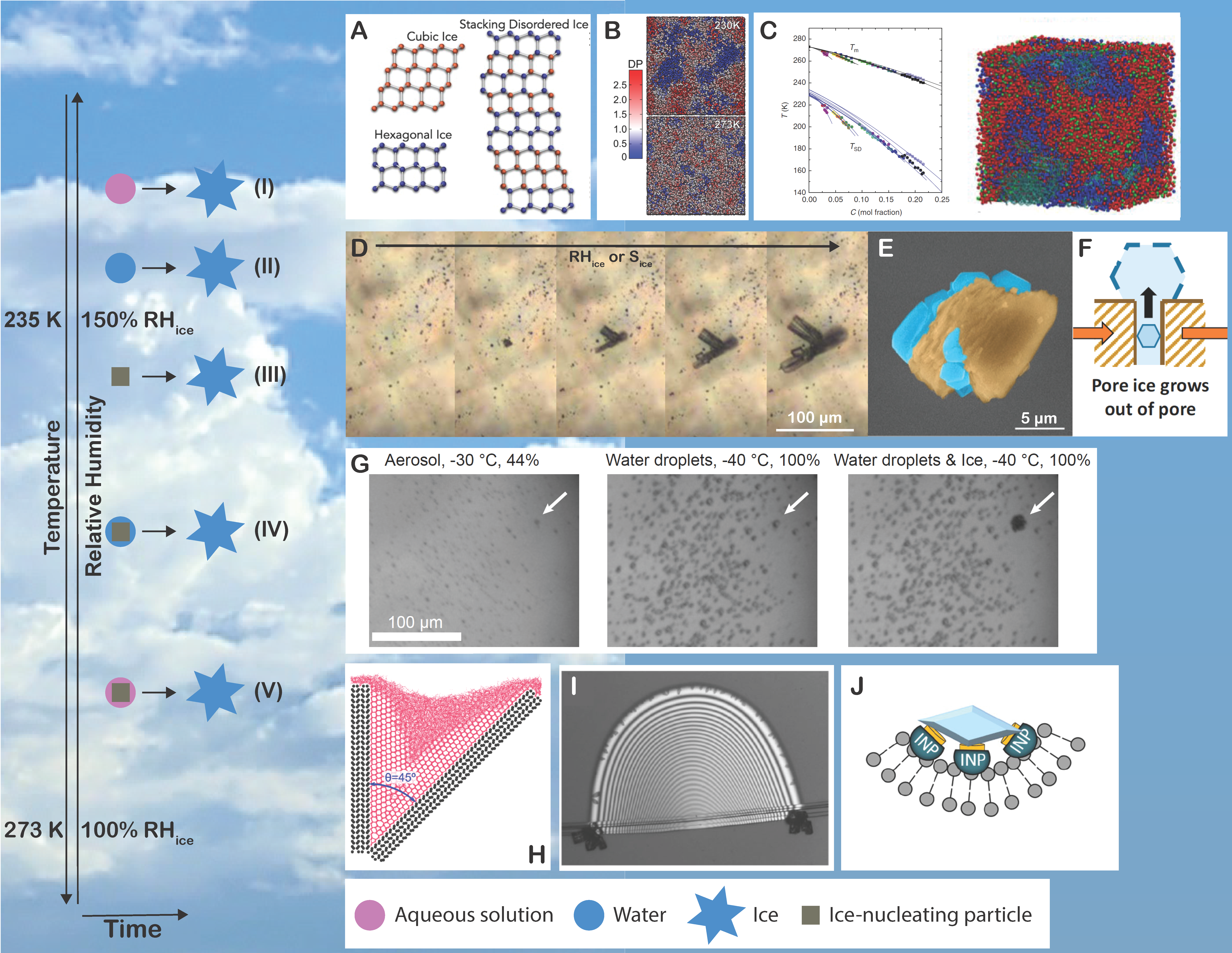Fundamental processes impacting atmospheric ice nucleation
Submitter
Knopf, Daniel — Stony Brook University
Area of research
Aerosol Processes
Journal Reference
Science
Prediction of atmospheric ice crystal formation is crucial to improve the representation of cold clouds and the hydrological cycle. Recent experimental and computational advances relevant for our understanding of atmospheric ice nucleation are reviewed.
Impact
Although ice formation is common, theory for predicting how particles form ice crystals has only recently advanced to the point where a single descriptor can be applied for different ice nucleation pathways considering practically all atmospheric conditions. Research over the past 20 years has led to this discovery that water activity can serve as a promising universal theoretical predictor for not only ice in clouds, but also the water and ice structures in the supercooled temperature regime, the interfaces involved in ice nucleation, and other substrate physicochemical properties.
Summary
From single molecules of water to vast atmospheric clouds consisting of ice, theoretical understanding of ice nucleation is necessary to connect laboratory and modeling results to global scales. Condensed-phase water activity, ambient temperature, and the amount of particles in the air are the straightforward variables to do this in a theoretical way and aptly suited to predict freezing. In particular, when equilibrated in air, water activity of aerosol particles is equal to the ambient relative humidity. Surprisingly, it is water activity that can predict ice nucleation at the maximum compressibility of water molecules, at the defined equilibrium between high- and low-density water, and when the water layer adjacent to a solid particle attains sufficient ice-like bonding. These kinetic and thermodynamic phenomena are theoretically tied to nucleation theory, which can explain ice nucleation rates considering variability in temperature and particle salt content and internal pressure. In summary, nucleation theory applying water activity as a predictor parameter allows prediction of atmospheric ice nucleation and greatly facilities the physical representation of ice formation in cloud-resolving and climate models.


